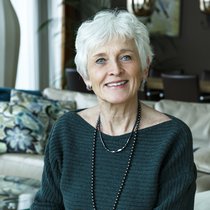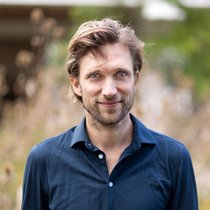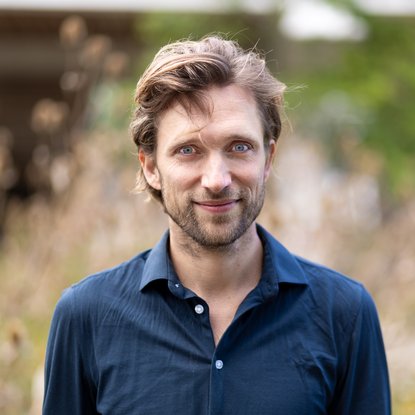The production of solar panels requires a great amount of resources. So, how can we increase circularity of solar panels? During the last edition of Circular Economy Lab, we focussed on circular solar panels, and discussed existing applications and future steps. Participants explored the following questions:
- How can we properly prepare for the flood of used solar panels that will enter the market en masse?
- What innovative solar panels are currently in development that meet the high(er) circularity standards in terms of design?
- Can the Netherlands be a leader in this transition?
Recently, magazine 'Milieu' published this article (in Dutch, pages 30-31) written by Jacqueline Cramer and Joppe van Driel, who shared their main take-aways from the Lab. Let's zoom in on their highlights for you below.
“We can significantly increase the circularity of current and new generation solar panels in the Netherlands. The opportunities are there for the taking. It is just a matter of doing it.”
Joppe van Driel
Program Developer
What to do with 7 to 8 million used solar panels in 2026?
Reuse and recycling of current solar panels is currently done on a small scale. A reason for this is because the flow of discarded solar panels is still relatively small, and as such investors are reluctant to focus on this market.
However, there are now about 7 to 8 million solar panels sold annually on the Dutch market. These used solar panels are expected to be released on a large scale from 2026 onwards. Hence, the urgency to start investing in reuse and development of high quality recycling technology is increasing.
Reuse of solar panels
After passing thorough testing, used panels that are still good enough can be certified and then put back on the market as a cheaper, refurbished panel. To start this, supplier Sungevity, in collaboration with among others WEEE NL and Urgenda, has launched ZonNext - a platform that matches supply and demand of used solar panels.
“Consider, for example, a government building that is being demolished with solar panels on its roof; the panels that are released can be made available to low-income households.”
Joppe van Driel
Program Developer
What makes recycling a tough job?
Recently a partnership has been set up between WEEE NL, Consultancy bureau Pastoor and TNO, among others. Their aim is to remove the aluminum profile and make it suitable for reuse. Also, the glass plates can be carefully disassembled and processed into clean materials for new plates. The plastic sheets and the actual solar cells - iron wires with solar collectors - can be separated in a pyrolysis plant, this also allows the plastic to be fully recycled. From the remaining solar cells, the silicon can be separated from the silver and other metals to serve as a circular raw material for new panels.
The consortium wants to have this new recycling technique operational by 2026 at the latest, so that from then on the rapidly increasing flow of solar panels can be recycled at a high level. This mainly requires innovation funds and a company that is willing to invest in the recycling plant.
“Recycling of the current generation of solar panels is difficult because all components are often packed and glued together. Despite these limitations, these solar panels can be recycled in a higher quality than is currently the case.”
Jacqueline Cramer | Utrecht University

Examples of designing circular solar panels
Fortunately, the production of new solar panels is increasingly taking circularity into account. A number of Dutch companies are leading the way in this regard. One example is the company Solarge. In their panels, glass and aluminum have been replaced by innovative fiber-reinforced synthetic materials derived from recycled plastics or bio-based sources.
The panel can last at least 25 years, is super-light (thus suitable for less load-bearing roof structures) and has a low CO2 footprint. The used PV modules can easily be thermally dismantled into (whole) solar cells and polymers, which can be continuously reused in the same type of solar panel.
Exasun is another Dutch company that produces a new generation of circular solar panels. It sells the panels in the form of roof tiles that immediately serve as waterproof roofs. The roof tiles are free of lead and PFAS and circularly designed. Both examples fit seamlessly with the European Solar Manufacturing Accelerator program to stimulate the production of sustainable solar panels and thereby increase the security of supply of raw materials in Europe.
The importance of scaling up
Panels of both Exasun and Solarge can become competitive with the now dominant Chinese panels in the foreseeable future. The process of scaling up, i.e. sufficient customers, is a key factor. Only when there is a guaranteed volume of sales will it be profitable to build a production facility and only then will financiers be willing to invest in it.
“This "chicken and egg" problem can be overcome by circular purchasing policies. It helps enormously when buyers include contractual requirements in their tenders for solar panels, for example by stating that solar panels must have a low carbon footprint and be PFAS-free.”
Joppe van Driel
Program Developer
A guide to the circular procurement of solar panels aimed at municipalities and other public commissioning authorities will be available in the autumn of 2021. It is proposed to link this to the buyer groups of PIANOo and Rijkswaterstaat, which are developing nationally harmonized circular procurement criteria for various product groups. The governments, companies and knowledge institutions in the Amsterdam Metropolitan Area could be joint launching customers.
What about leasing solar panels?
In addition to including circular requirements, it is important to consider total lifetime costs. Customers often only look at the purchase costs, is the experience of Wocozon, a foundation that installs solar panels in approximately 1000 houses per month in the social rental sector. Over the entire lifecycle cheaper offers are actually more expensive, because parts soon have to be replaced. If a housing corporation has bad installations installed, for example, service teams have to constantly drive around the city to solve problems.
Suppliers like Wocozon often work with lease constructions. They can then continue to steer the quality and sustainability of the panels themselves. Producers such as Solarge and Exasun are also in favor of energy-as-a-service contracts, because they then retain responsibility for the life cycle of their product.
After the first use, they can take back the materials and guarantee reuse or high-quality recycling in new panels. The disadvantage of energy-as-a-service contracts for clients is that you have to arrange more at the front end.
“There are legal issues involved, it requires a different attitude, lots of questioning and different contract management, so you have to set up your organization differently. However, the unanimous conclusion of the Lab participants was: let's work together from now on to give the circularity of solar panels a boost.”
Jacqueline Cramer | Utrecht University

Amsterdam's Deputy Mayor: why circular solar panels are crucial
The 24th session for Circular Economy Lab was organized together with Utrecht Sustainability Institute, Amsterdam Economic Board, the City of Amsterdam and Alliance Circle Region Utrecht. The Lab kicked-off with a video message from Marieke van Doorninck, Deputy Mayor for Spatial Development and Sustainability of the City of Amsterdam.
The Deputy Mayor among others stated that the next crucial step is to make solar panels circular on a large scale, to prevent toxic PV waste, keep critical raw materials available and prevent forced labor in the production chain in China.
Opening of the Circular Economy Lab by Marieke van Doorninck, Deputy Mayor for Spatial Development and Sustainability of the City of Amsterdam

